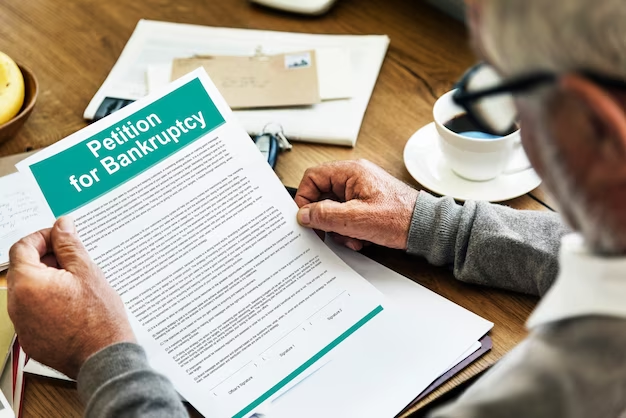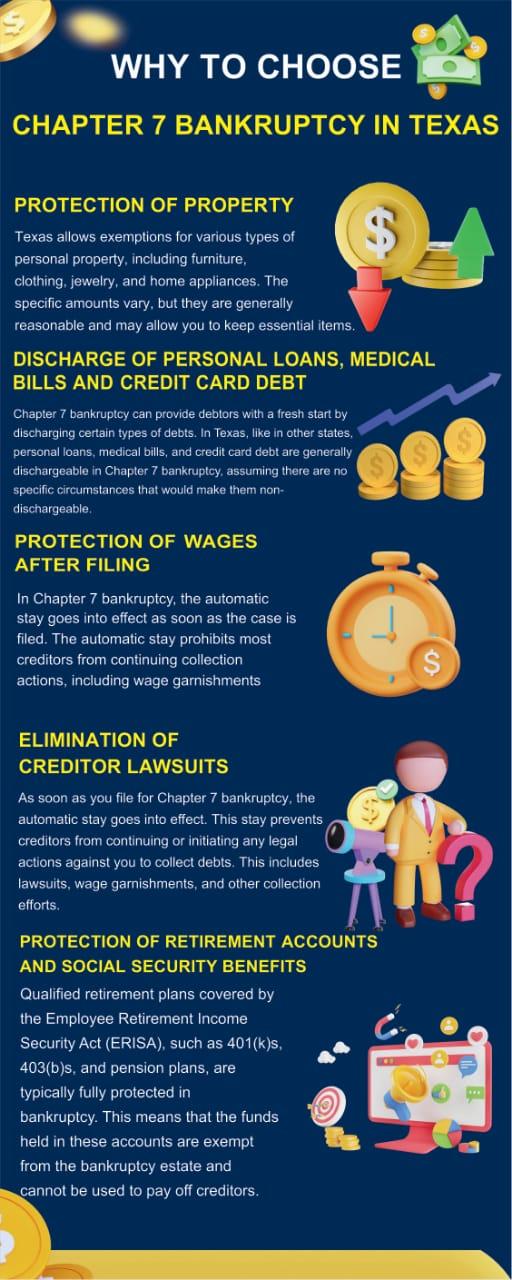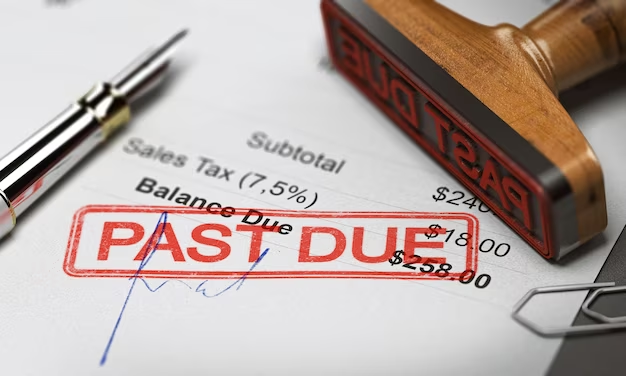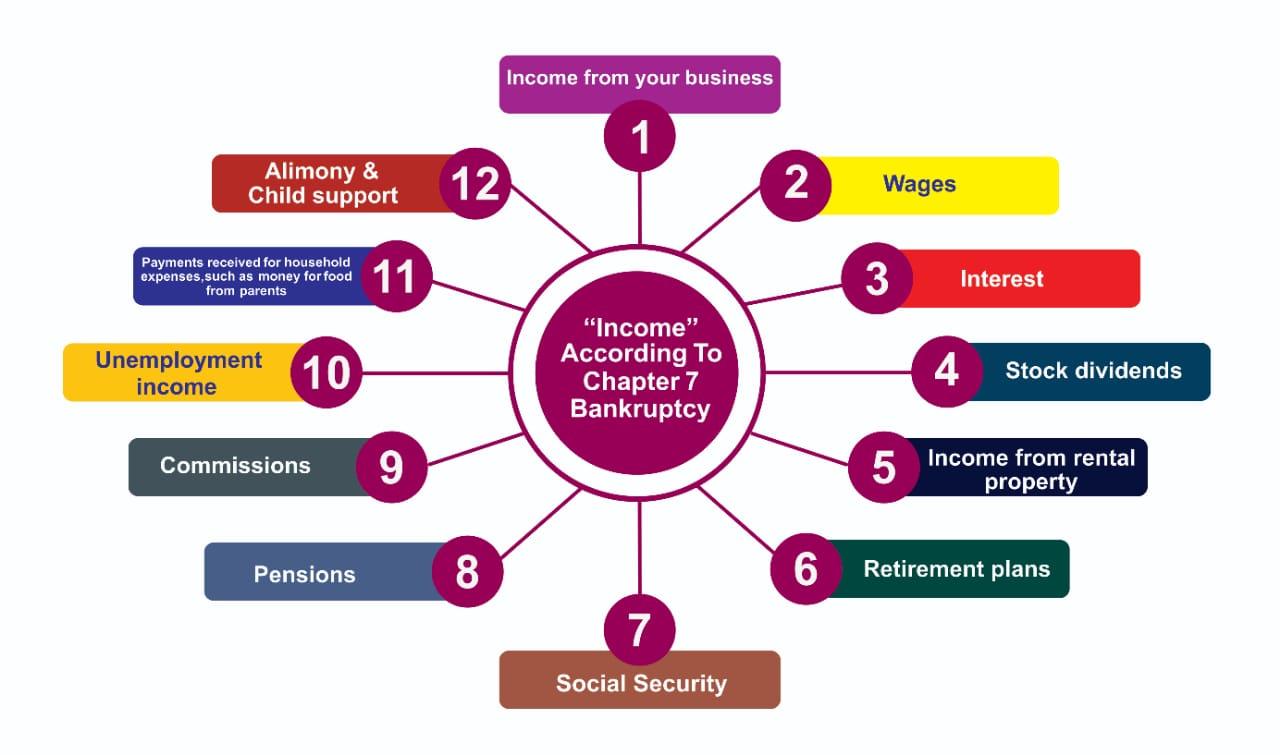To file Chapter 7 bankruptcy in Texas, confirm you pass the means test, complete pre-filing credit counseling, prepare your forms and Texas exemptions, file in your federal district, attend the 341 meeting, and complete debtor education; most straightforward cases receive a discharge in about four to six months, depending on trustee scheduling and whether any objections or extensions are filed.
There are times when everyone needs help. Struggling with overwhelming debt can be frightening, and releasing this financial burden can herald a fresh start. Chapter 7 bankruptcy is one way to do that. However, Chapter 7 bankruptcy in Texas can be a complex process. For instance, not everyone is eligible; you must have a solid understanding of what it entails and what you must do while filing bankruptcy.
Quick Answer: How do I file Chapter 7 bankruptcy in Texas?
In Texas, pass the means test, finish credit counseling within 180 days, then file in your federal district; filing triggers the automatic stay, followed by a 341 meeting and debtor education.
- Verify means-test eligibility and Texas exemptions
- Finish credit counseling and debtor education courses
- File petition and attend the 341 meeting

The Basics of Chapter 7 Bankruptcy
Chapter 7 bankruptcy is commonly called “liquidation bankruptcy.” It discharges unsecured debt, offering bankruptcy relief to individuals who cannot meet their financial obligations. In Texas, as in other states, this process involves liquidating non-exempt assets to pay off creditors. However, many assets are exempt under Texas bankruptcy law, meaning you can keep them.
Need-to-Know Highlights
- Texas exemptions can protect homestead and essential personal property.
- Means test determines Chapter 7 eligibility.
- Most cases discharge in roughly four to six months.
- Filing triggers an automatic stay that pauses collections.
- You must attend a 341 meeting and complete debtor education.
Benefits of a Chapter 7 Bankruptcy in Texas
Chapter 7 Filing in Texas can relieve the stress of paying debts you cannot afford. Here are some reasons to file, among others:
- Protection of property
- Provision of debt relief
- Discharge from personal bankruptcy, medical bills and credit card debt
- Protection of wages after filing
- Lack of a repayment plan
- Elimination of creditor lawsuits
- Protection of retirement accounts and social security benefits
- Quick resolution, concluding within four to six months

Eligibility for Chapter 7 Bankruptcy in Texas
Under Texas law, not everyone is eligible for Chapter 7 bankruptcy in the state. To determine if you qualify, you must meet specific criteria, including:
- Median Income: Texas eligibility uses U.S. Trustee median family income figures that are updated several times a year; use the current Texas table for cases filed on or after the effective date shown. If it is below the median income, you qualify to file Chapter 7 bankruptcy. Conversely, if it is above the median income, you must proceed to the next step – the means test.
- Means Test: The Chapter 7 means test compares your current monthly income to Texas’s median and, if above, applies allowed expense deductions (IRS standards and specified amounts) to determine presumed abuse. See 11 U.S.C. § 707(b)(2) and Official Forms 122A-1/122A-2. If your income exceeds the medium amount, by doing this, you might then be below that level. If your income exceeds the median amount despite subtracting your debt, you might file for Chapter 13, which allows you to use the extra income to pay off your debt.
- Credit Counseling: When filing for Chapter 7 bankruptcy in Texas, you must complete a credit counseling course from an approved agency within 180 days. This course can help you explore alternatives to bankruptcy.

What Constitutes Income in a Chapter 7 Bankruptcy?
Income for the means test includes:
- Income from your business
- Wages
- Interest
- Stock dividends
- Income from rental property
- Retirement plans
- Social Security benefits are excluded from ‘current monthly income’ for the Chapter 7 means test. See 11 U.S.C. § 101(10A)(B).
- Pensions
- Commissions
- Unemployment income
- Payments received for household expenses, such as money for food from parents
- Alimony
- Child support

Where Do You Find Proof of Income?
Some places where you will find what you earned are:
- Recent tax returns
- Wage stubs
- Social Security documentation
- Alimony statements
- Child support documents
- Bank statements
- Contracts or leases
- Other financial transaction documents
Using Form 122A-1 and Form 122A-2 to Calculate Income Levels
Two forms help you calculate your income on the means test:
- Form 122A-1: This three-page form helps you calculate your income. It is relatively uncomplicated once the needed information is available. You list your income and, in some cases, your spouse’s.
- Form 122A-2: This nine-page form is more complicated to fill out. It helps you calculate your disposable income.
Both forms are signed and dated and become part of the bankruptcy paperwork.

Who Chooses a Trustee in a Chapter 7 Bankruptcy?
In Chapter 7, the United States Trustee appoints a private panel trustee to the case (trustees are private parties, not government employees). Their primary role is to assess the debtor’s assets and liquidate the non-exempt ones. They focus on distributing the proceeds to creditors.
Filing the Chapter 7 Bankruptcy Petition
The next step is officially filing your Chapter 7 bankruptcy petition with the bankruptcy court. Here’s how to do it:
- Locate Your Local Bankruptcy Court: In Texas law, you must file your bankruptcy petition with the United States Bankruptcy Court. Depending on where you reside in Texas, this could be for the Southern, Northern, Eastern, or Western District.
- Complete the Bankruptcy Forms: Complete various bankruptcy forms, including the petition, schedules, and statements. These forms require detailed information about your financial situation, such as your assets, liabilities, income, and expenses.
- Pay Filing Fees or Request a Fee Waiver: As of today, the Chapter 7 filing fee is $338 (filing fee $245 + administrative $78 + trustee surcharge $15). However, you can request a waiver if you cannot afford the fee. You do this by submitting the appropriate forms and demonstrating your inability to pay.
- Submit Your Bankruptcy Petition: File your completed bankruptcy forms and supporting documents with the bankruptcy court. You can file in person or electronically, depending on the court’s policies.
- Notify Creditors and the Trustee: Once your petition is filed, the court will notify your creditors and assign a bankruptcy trustee to oversee your bankruptcy case. The trustee will review your documents, conduct a meeting of creditors, and oversee the liquidation process if necessary.
Related: Can I Exclude a Credit Card from Chapter 7 Bankruptcy?
The Automatic Stay
One of the significant benefits of filing for Chapter 7 bankruptcy is the automatic stay. An automatic stay goes into effect when you file your bankruptcy petition. This stay stops most creditors from attempting to collect debts, repossess property, or start legal proceedings against you. It also provides temporary bankruptcy relief in a stressful time. It lets you focus on your bankruptcy proceedings without persistent harassment from creditors. However, the automatic stay does not extend to any cosigners. Creditors can continue pursuing the debt from them.
The Meeting of Creditors
After filing your bankruptcy petition, you’ll need to attend an appointment of creditors, also known as a 341 meeting. By rule, the § 341(a) meeting in Chapter 7 is scheduled not fewer than 21 nor more than 40 days after the order for relief. Fed. R. Bankr. P. 2003(a).
What Happens at the Meeting of Creditors?
The following occurs at this meeting:
- The person seeking bankruptcy, their attorney (if they have one), and their trustee are present at the 341 meeting.
- Creditors may attend but often do not.
- The trustee will ask individual debtor about his financial situation, assets, and debts.
- The debtor must answer these questions truthfully under oath.
The meeting of creditors is an opportunity for the trustee to verify the accuracy of your bankruptcy documents and gather additional information. It is not a court appearance, and creditors usually do not attend.
Asset Liquidation and Texas Bankruptcy Exemptions
In a Chapter 7 bankruptcy, the trustee may liquidate non-exempt assets to pay off your creditors. Texas has generous exemptions that often protect your property from being sold. Common Texas bankruptcy exemptions include:
- Homestead Texas exemptions (protecting your primary residence) up to 10 acres for an urban homestead, or up to 100 acres for a single adult / 200 acres for a family for a rural homestead (Tex. Prop. Code § 41.002)
- Personal property exemptions (protecting items like vehicles, clothing, and household goods such as appliances and furnishings)
- Retirement account exemptions (protecting certain retirement funds and public assistance)
- Wage and income exemptions (safeguarding a portion of your income)
- Alimony and child support, if you are receiving it
- Life insurance
- Social Security
- Compensation recovered in a personal injury case
You can discuss these Texas exemptions with an experienced bankruptcy attorney to ensure your assets are adequately protected.
Related: Can I Keep My Paid Off Car in Chapter 7?
Case Study: Using Texas Exemptions to Save a Home and Car in Chapter 7
A couple from Plano came to us exhausted by credit cards and medical bills. They were current on their mortgage and truck loan but terrified Chapter 7 meant losing both. Collection calls were daily, and a lawsuit was looming. They needed relief, not more chaos.
We verified they passed the means test, then built our plan around Texas exemptions. We documented fair market values, confirmed their urban homestead fit within limits, and tallied personal property under the family cap. Retirement accounts were already protected. We filed to trigger the automatic stay, prepared clean schedules, and coached them for the 341 meeting.
The trustee issued a no-asset report. Four months later, they received a discharge. They kept their home and their truck, and the lawsuit stopped.
The takeaway: smart valuation and exemption planning—while staying current on secured payments—can erase unsecured debt in Chapter 7 without losing essential property in Texas.
Discharging Debts
If everything goes smoothly and there are no objections from creditors or the trustee, you receive a discharge order from the court. This order legally eliminates your obligation to repay most of your debts. However, not all debts are dischargeable in bankruptcy, including:
- Child support and alimony, if you are paying
- Student loans (unless you can prove undue hardship)
- Some tax debts
- Debts incurred through fraud or criminal activity

Frequently Asked Questions
FAQs About Eligibility & Costs
What are the current Texas Chapter 7 income limits (means test)?
Texas uses U.S. Trustee median income figures by household size. If your six-month average income is at or below the Texas median, you generally pass the means test; if it’s above, you must qualify under the second-part means test using allowed expense deductions.
How much does it cost to file Chapter 7 in Texas?
The federal court petition fee is $338. Courts may allow installment payments or a fee waiver for eligible low-income filers. Attorney fees are separate and vary by case and market. Check your district’s fee page for current details.
How long does a Texas Chapter 7 take from filing to discharge?
Most Chapter 7 cases finish in about four months if there are no objections and courses are completed on time. Local timing can vary by trustee and docket, so many filers plan for about 4–6 months.
FAQs About Exemptions & Protections
Will I lose my house or car in Chapter 7 in Texas?
Most filers keep a primary home and a car if they fit within Texas exemptions and payments are current.
- Homestead up to 10 urban acres or 100 or 200 rural acres
- Equity over limits can be at risk
- Secured lenders may repossess after missed payments
What property can I keep in a Texas Chapter 7?
Texas exemptions typically protect major assets, including a homestead and personal property.
Highlights:
- Homestead: up to 10 urban acres or 100/200 rural acres (single/family)
- Personal property: up to $50,000 (single) or $100,000 (family) aggregate
- Many retirement/benefit assets
Specific facts and choices (Texas vs. federal exemptions) matter.
Will Chapter 7 stop collections and wage garnishment (automatic stay) in Texas?
Yes. Filing triggers an automatic stay that immediately pauses most collections, lawsuits, and garnishments. Some actions are excepted or can resume if a court lifts the stay, especially for repeat filings or secured collateral.
FAQs About Process & Outcomes
What happens at the 341 “meeting of creditors”?
You attend a brief meeting (usually 20–40 days after filing) with the trustee, show ID, and answer questions under oath about your petition, assets, income, and expenses. Creditors may attend but rarely do.
Which debts aren’t discharged in Chapter 7?
Common nondischargeables include:
- Child support and alimony
- Most recent income taxes
- Most student loans (absent undue hardship)
- Debts from fraud or willful/malicious injury
Details vary; ask counsel.
FAQs About Representation & Timing
Can I file Chapter 7 in Texas without a lawyer?
Yes—pro se filing is allowed. Texas bankruptcy courts caution that bankruptcy has long-term consequences. Review district resources (and required courses) or consult a Texas bankruptcy attorney first.
How long before I can file Chapter 7 again?
To receive another Chapter 7 discharge, you typically must wait 8 years from the filing date of your prior Chapter 7 (different intervals apply after other chapters).
FAQs About Eligibility Details & Credit Impact
Does the amount of debt matter for Chapter 7 eligibility? (updated)
There’s no minimum debt to file Chapter 7. Eligibility turns on the means test and your ability to repay, not a dollar threshold; small debts can still qualify if repayment isn’t feasible.
Will Chapter 7 permanently ruin my credit? (updated)
No. A Chapter 7 can stay on your credit report for up to 10 years, but many filers start rebuilding credit within months with responsible use and on-time payments.
Working with Warren & Migliaccio, L.L.P.
When searching for a bankruptcy lawyer, you want one who provides compassionate and experienced assistance. At Warren & Migliaccio, L.L.P., we do everything possible to eliminate the stress of filing for Chapter 7 bankruptcy.
We help you when deciding if bankruptcy is right for you. It is a big but often necessary step. Don’t face the decision alone – contact our experienced bankruptcy attorney for the best legal aid.
Call us at (888) 584-9614 to set up a free consultation.
